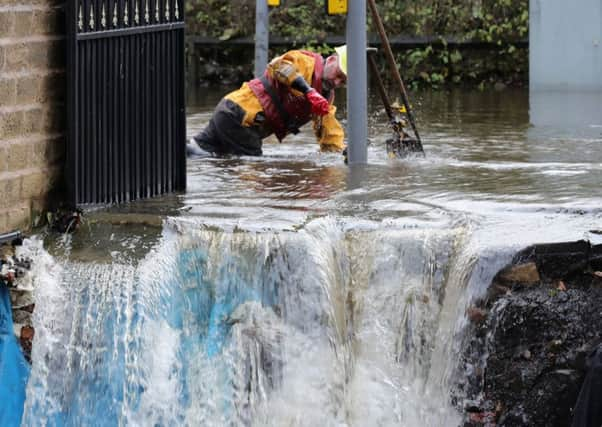Ilona Amos: Restoring our natural world will encourage nature to look after us


These scoundrels were among the first ever UK storms to be given names – in an attempt to help raise public awareness of extreme weather events. The new convention blasted off in early November 2015 when Abigail lashed northern Scotland, and ended with Katie, the 11th storm in the series, which departed these shores on Easter Monday after causing considerable disruption on England’s south coast.
It’s now a full year since the considerable force of Storm Desmond hit the country, wreaking widespread havoc and leaving behind an insurance bill of more than £1.3 billion. The effects were made even worse because unprecedented levels of rainfall hit ground that was already sodden and rivers that were close to bursting point after weeks of persistent wet weather. And more pain was piled on when storms Eva, Frank and Gertrude followed in rapid succession. There was literally nowhere for the excess water to go. Some householders were flooded four times in a row.
Advertisement
Hide AdAdvertisement
Hide AdA new report from scientists at the Centre for Ecology & Hydrology has found last winter’s episode ranks alongside severe floods in 1947 as the largest since records began a century ago.
This winter things have been pretty settled in Scotland so far. Storm Angus left parts of south-west England underwater and caused two ships to collide and left a ferry stranded in the Channel. And thankfully I’m not here to warn of an impending deluge. Everything is looking ‘average’, with no predictions of extreme events in place – for the moment anyway.
And that’s part of the trouble. Accurate medium-range forecasting is not really possible. Conditions can change rapidly. Met Office forecasts and flood alerts from the Scottish Environment Protection Agency are useful tools to flag up imminent danger, but experts are still not able to accurately predict conditions one, two, three months hence. Not that it would be very useful if they could. Shouting “Run!” is probably just as effective.
We need to take a long-term view, prepare for the worst-case scenario and futureproof our society. This includes taking steps to guard against potential flooding when building new homes and infrastructure. But we also need to focus on the fundamentals and make full use of our natural defences – forests, peatlands and floodplains.
Scotland’s geography means it has traditionally been more resilient to flooding than its southern neighbours, though this has been diminished through intensification of farming, commercial forestry, overgrazing by animals and spreading urbanisation.
Last January Scottish ministers announced an extra £12 million of funding to help flood-hit areas. But that isn’t going to solve this problem.
When there’s a repeat of the sort of biblical flooding we have been witnessing recently, and there inevitably will be, we’ll hear the same questions being asked. ‘Why has nothing been done?’ Okay, so we can’t ever completely protect ourselves from the elements. But by restoring our natural environment and looking after it, nature will in turn help look after us.